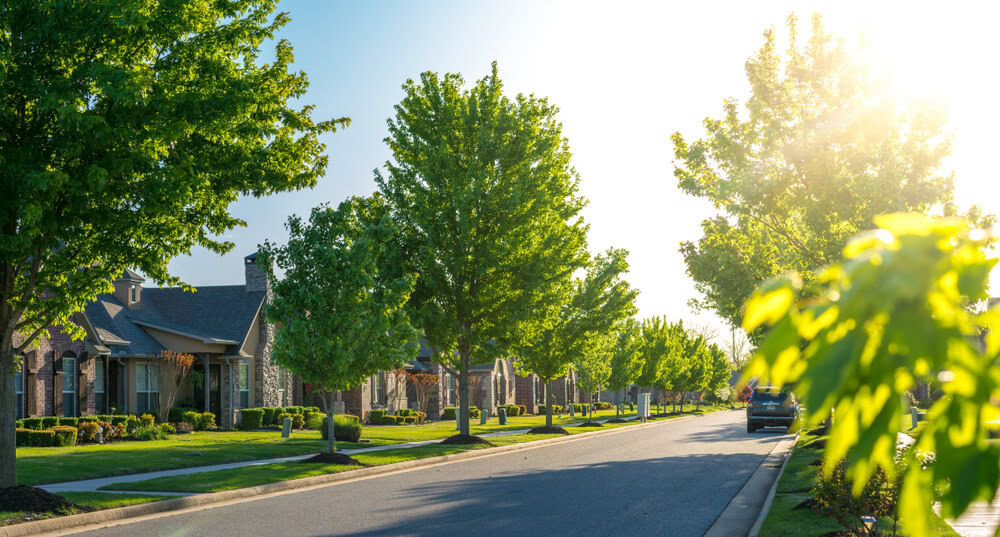What Is Hazard Insurance and Why Do You Need It for Your Home?

Are you doing everything you can to protect the investment you made in your home? It is important to be aware of the limits of your homeowners insurance coverage, especially for things like storm damage, fires, and other natural events. Once you understand more about your built-in hazard insurance, you’ll understand more about how your home is covered in the event of unpredictable but severe issues.
But just what is hazard coverage for your home, and what can your existing policy do for you in the face of certain hazards? Keep reading to find out.
Understanding Hazard Insurance: What It Is and What It Covers
Hazard insurance protects your home from natural events and is a standard part of various types of homeowners policies. Those events include fires, storms, sleet, and anything specified in your plan documents.
Knowing what is and is not covered by your existing policy is very important. This type of coverage is designed to supplement what would otherwise be gaps in your home’s protection. By understanding why home hazard insurance is such an important part of your homeowners policy, you can determine whether your coverage is adequate for your family’s needs.
Why You Need Home Hazard Insurance: Protecting Your Property and Investment
In most cases, hazard insurance is part of your existing homeowner’s policy. It serves an essential function: to allow you to rebuild after natural events that can cause catastrophic damage.
Another way of looking at this coverage is that much of your existing policy is designed to protect you from very different threats, including the threat of getting sued by someone who gets injured while visiting, in case you are liable. By contrast, home hazard coverage primarily protects you financially if the physical structure of your home is damaged.
Hazard Insurance vs. Home Insurance: The Key Differences Explained
In short, homeowners policies are designed to cover the home as well as things like your personal property, in the event of damage or theft, and liability, which helps pay for the medical bills of those injured on your property and, if necessary, pays for your legal bills if the injured party takes you to court.
The hazard portion of a homeowners policy is designed to protect the structure of your house. It generally covers things like fires, falling trees, lightning, and even automobiles that may cause damage to the structure. Such coverage can also pay for theft and vandalism, assuming these acts damage the structure of the home and not simply your private property.
Who Needs Hazard Insurance? A Guide to Identifying Your Coverage Needs
If you are already a homeowner or plan on becoming one, then the bottom line is you are a prime candidate for this type of insurance. Without it, any house you buy could be catastrophically damaged by events beyond your control, resulting in major out-of-pocket expenses. If you had the proper protection of a homeowners policy with great hazard coverage, however, you would not have to personally pay for all of these necessary repairs, making it easier and quicker to get your family back home and restore your investment.
That said, you can examine your home and the surrounding area to better assess possible threats. For example, if your house is surrounded by trees, you are at higher risk of a tree falling on the structure. Meanwhile, areas that receive plenty of storms will get plenty of lightning. Even if you have a separate flood insurance rider, it is the hazard coverage paying for lightning damage to your home.

You may also want to consider the weather patterns and crime trends in your community. If extreme weather is common or crime rates are rising, you may have more reason to ensure the hazard portion of your homeowners’ policy offers adequate protection.
Long story short? Whether or not you are there at the time, you never know exactly what could happen to your home. That is what makes coverage so important, and hazard coverage is another way that your homeowners insurance gives your house the protection it deserves.
Your Hazard Insurance Policy: What to Expect and What to Look For
While a flood may be a hazard, this portion of your insurance most likely does not cover flood damage. This is one of the reasons why flood insurance is important for every homeowner.
Otherwise, you should expect a policy that covers risks such as wind, hail, fire, lightning, theft, and vandalism. As always, check the fine print and make sure the policy covers all your concerns. If not, there is still time to shop around, get quotes, and choose a new carrier.
Common Questions and Concerns About Home Hazard Insurance Answered
Still unsure if this coverage adequately protects you and your family? Use the guide below to get answers to some of the most common hazard coverage questions.
What Does Hazard Insurance Not Cover?
Most homeowners’ policies do not cover flooding or earthquakes, even if they have a hazard insurance section. You will likely need to purchase separate flood and earthquake policies to protect yourself from these risks.
Will My Hazard Insurance Increase?
Homeowners coverage may increase over time as the value of the property increases. A higher overall cost means it would cost more to repair or replace the house, and the increased cost of your premium reflects this.
Can I Get a Hazard Policy Separately?
This depends entirely on your carrier. Most carriers include hazard coverage as part of a standard homeowners policy, but some still offer it as a separate service.
Hazard Insurance Claims: What To Do in Case of Damage or Loss
The good news about hazard and homeowners coverage being intertwined is that you typically do not have to file separate claims. In the event of damage to your home, you simply must file a claim as you normally would. You probably already have a plan for what to do after a natural disaster, but there are a few things to keep in mind that will make filing your insurance claim easier.
Before you file, be sure to document the damage, including taking photos and making videos. Itemize any personal property that was damaged so you can assess how much it would cost to replace it and get a few repair quotes from professionals in your area. All of this can help ensure the claim pays out and you benefit from the full extent of your policy.
Tips for Finding the Right Home Hazard Insurance Policy for You and Your Property
Choosing the best homeowners policy with the right hazard coverage is not always easy. However, you can make it easier for yourself by following a few simple tips.
For example, get quotes from multiple carriers so you can get the best price for the coverage you need. Additionally, make sure the carrier offers the right amount of coverage for your home and that their hazard portion protects against the threats your structure is likely to face. Finally, pay close attention to how the deductible you want affects the overall cost of your policy.
Get Home Hazard Insurance Today
Now you know all about hazard coverage and why it is so important. But do you know where you can get premium coverage that best suits your needs?
At InsureOne, we specialize in protecting homes just like yours from anything that might threaten them. Getting the safety and protection your family deserves starts with getting a quote online. For a more personal touch, you can also pick up the phone and give us a quick call at 800-836-2240. Finally, feel free to visit us at an InsureOne office near you.


